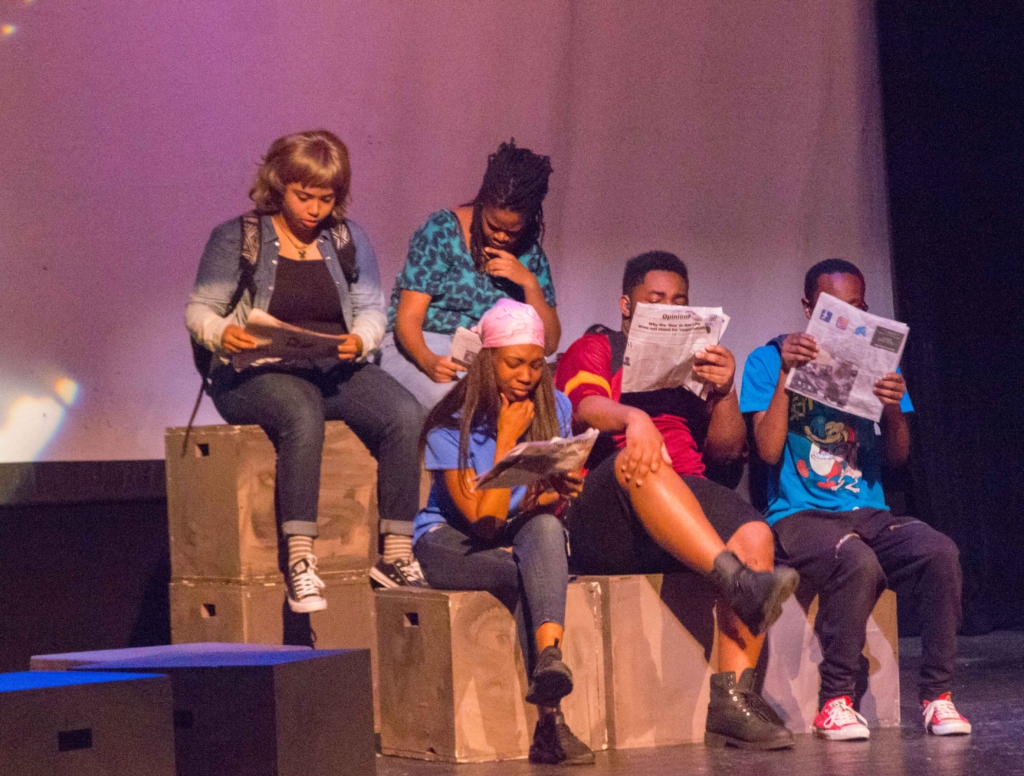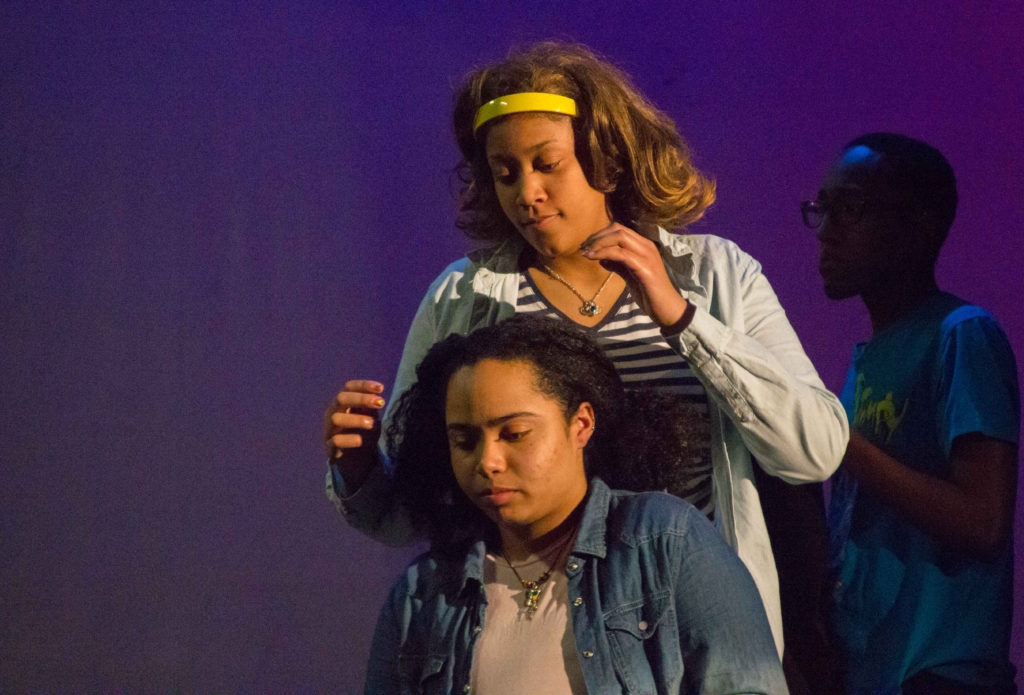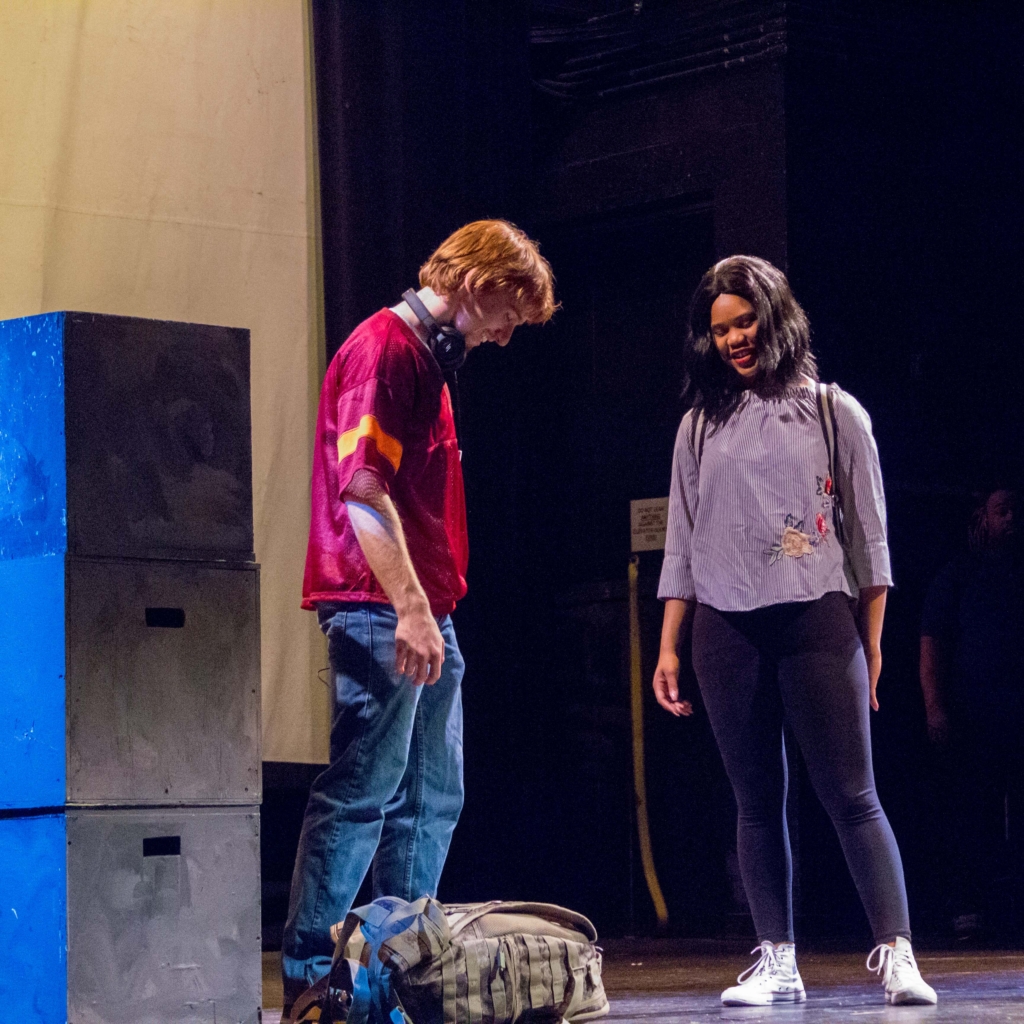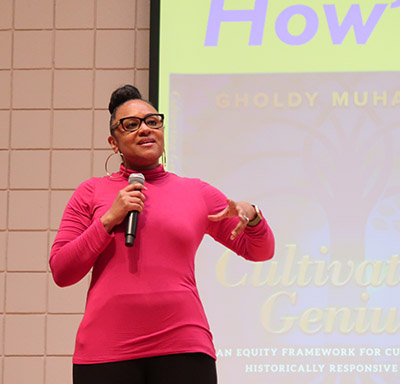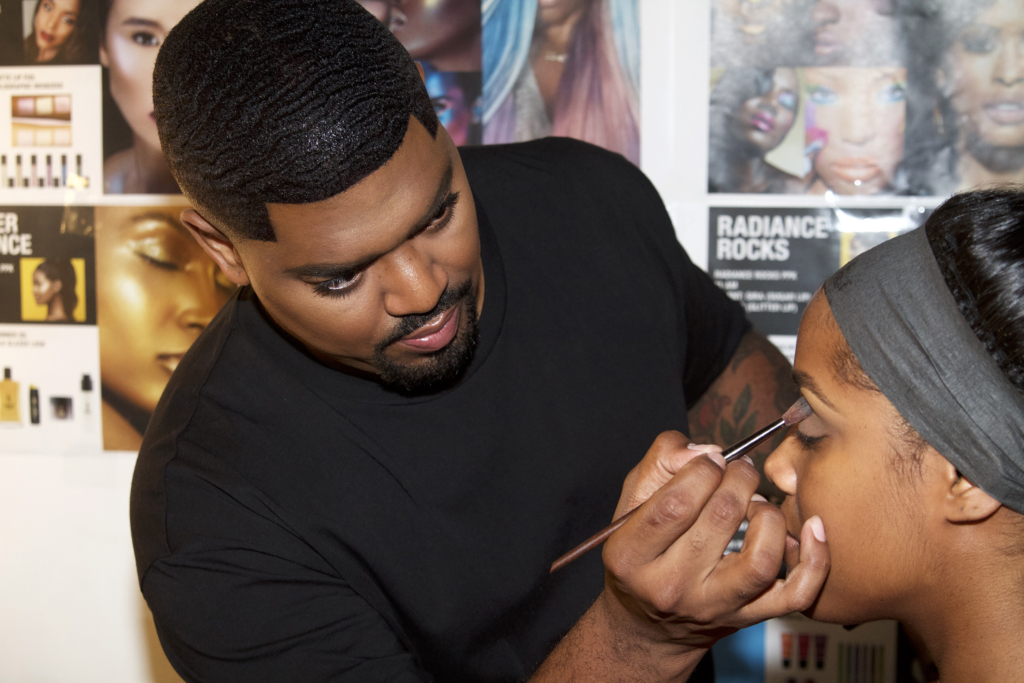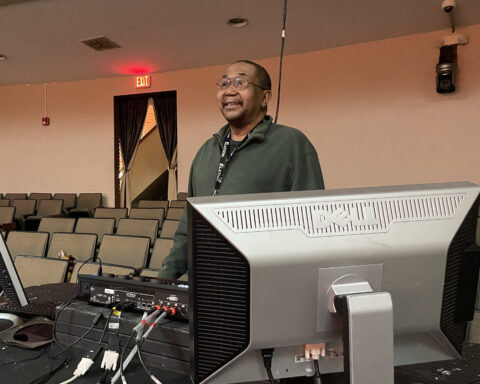Imagine waking up one morning on what was supposed to be a regular day: you wake up, go through your usual morning routine and head out.
When you enter the schoolyard, your idea of a regular day is ruined by three nooses hanging side-by-side on a tree.
The “Jena Six” incident involved six black students from Jena High School in central Louisiana. They were arrested in December 2006 after a school fight that resulted in a white student suffering severe bruising and a concussion. Those black students were subsequently charged with attempted murder and faced up to 100 years in prison without parole.
Dominique Morisseau’s play about those events, “Blood at the Root,” premiered April 6 in the University Theater on the bottom floor of the Farrison-Newton Communications Building.
The play asks the question “What happens when racial relations of a high school erupt into a perturbed, tumultuous and historical event?”
Play director and Department of Theater chair Dr. Stephanie “Asabi” Howard was at the protest for the Jena Six alongside mass communication professor Dr. Charmaine McKissick-Melton. She says that being at the event was a phenomenal experience for her and it was only natural that she would bring the play to N.C. Central University.
“The play is interesting because it is a hypothetical look at the inside of the high school and what the students may have been thinking and going through,” Asabi says. “Now, I think about it with curiosity more so, of knowing the other side.”
The arrested students had bonds ranging from $70,000 to $138,000. Several of their families couldn’t afford the excessive amount causing their sons to await trial from jail.
Erik DiLauro, who plays Colin, gave us insight to his character’s motivations and his approach to the role.
“I love Colin, I really do,” said DiLauro. “The play doesn’t show that he explicitly called anyone a derogatory name.”
DiLauro says that in order for him to be able to connect with Colin, he decided to believe that the incident was just a big misunderstanding.
Was the Jena Six incident in itself a misunderstanding?
Asabi notes that there are still a lot of questions about the motivations of the six football players that led to assaulting their white teammate, especially if the attack was premeditated.
“I think at the end of it all, it certainly made many people look at race relations in regard to how they affect our younger generation,” she said. “I can tell that in some ways it affects different generations and their perspectives very differently.”
First-time actress Tashonna Matthews, who climbed up the ranks from an extra to an understudy, says that things like the Jena Six incident shows how similar punishments within the school system are to actual incarceration.
“When you get somebody used to suspension, all you’re doing is locking them up and taking them away from education — essentially the same process as prison,” Matthews explains.
The remaining performances will take place at 8 p.m on April 13 and 14. The last performance will be at 3 p.m. on April 15 in the Farrison-Newton Communications Building’s University Theater on the first floor. Donations will be accepted at the door before and after the show.

